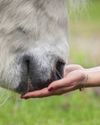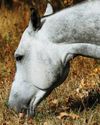
The bacteria only become a problem if they gain access to softened or damaged skin. If this happens, it causes inflammation of the skin and symptoms include reddening of the skin, itchiness and irritation, crusty skin and hair loss. A horse’s skin is extremely delicate and, when it is waterlogged, it becomes more susceptible to damage and infections. Even brushing past a spiky plant or working in a sand arena can cause micro-abrasions, which allow the bacteria to enter the skin.
Denne historien er fra June/July 2020-utgaven av HQ magazine.
Start din 7-dagers gratis prøveperiode på Magzter GOLD for å få tilgang til tusenvis av utvalgte premiumhistorier og 9000+ magasiner og aviser.
Allerede abonnent ? Logg på
Denne historien er fra June/July 2020-utgaven av HQ magazine.
Start din 7-dagers gratis prøveperiode på Magzter GOLD for å få tilgang til tusenvis av utvalgte premiumhistorier og 9000+ magasiner og aviser.
Allerede abonnent? Logg på

The Science Behind Tapering
The science behind tapering

Horse Treats
The ultimate guide

Horsey Hair Care
Tips and tricks for a healthy mane and tail

Horsey Hydration- The Importance Of Water In Winter
The importance of water in winter

A Horseback Safari
Abelana Game Reserve

The Psychology Of Riding Performance
Intrinsic motivation, part 7

10 Best Life Lessons From Horses
Life lessons from our horses

Breaking New Ground
The evolution of the Callaho Online Auction

Horse Psychology 101
Part 3: The horse's cognitive abilities

Colic Part 1
An owner’s worst nightmare